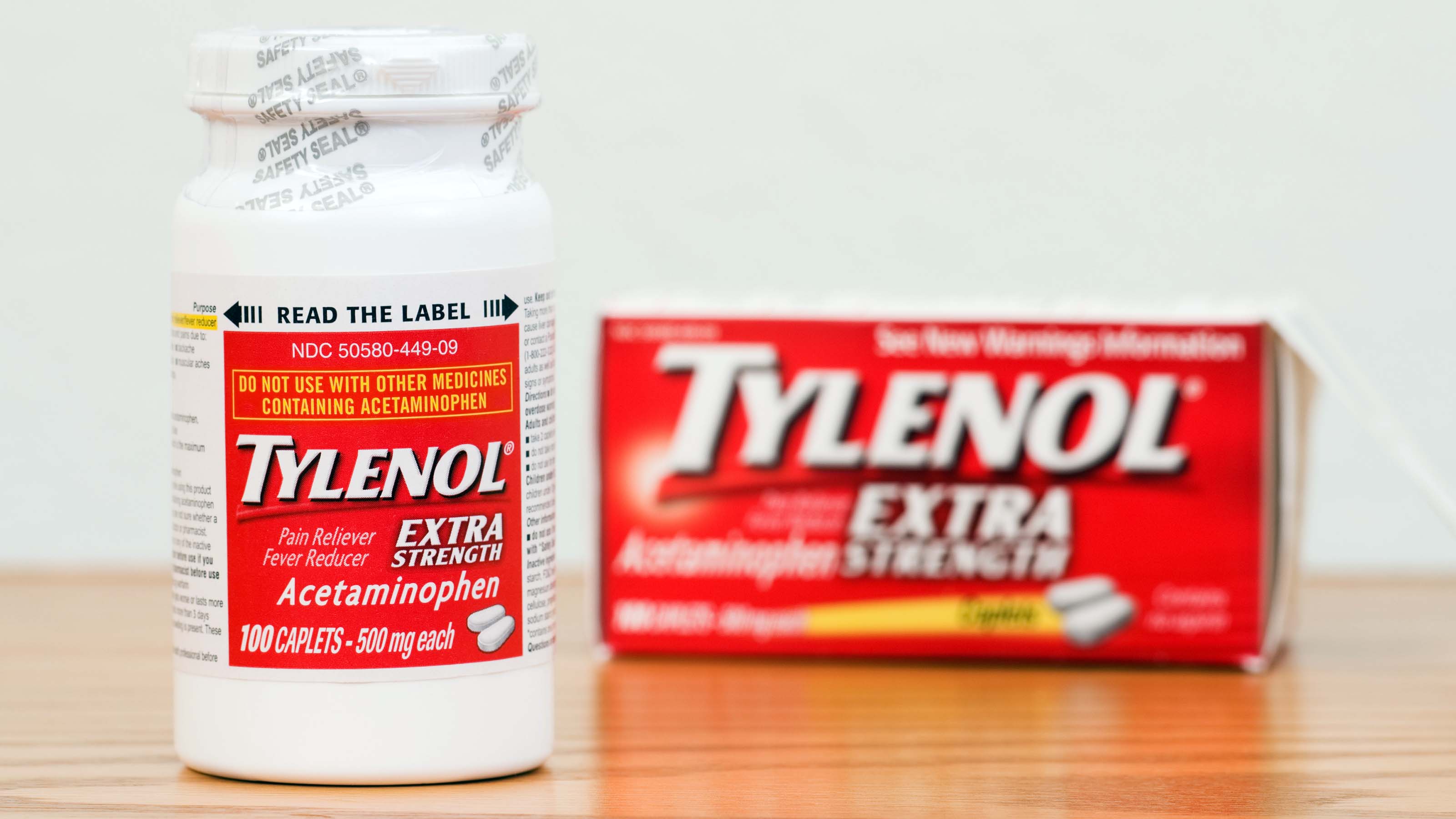12 Low-Volatility Stocks to Stabilize Your Portfolio
Have a look at a dozen low-volatility stocks, many paying rich dividends, that make worthy additions to any defensive investment portfolio.


The stock market suffered a turbulent September, and a number of factors are pointing toward an equally bumpy rest of the year. That likely will have investors looking for a smoother market ride than what the major indices have to offer – and one such way to do that is to buy low-volatility stocks to manage risk.
The upcoming presidential election is a massive point of uncertainty, but it's hardly the only one. The potential for a "second wave" of COVID-19, the state of the U.S. economy, and Chinese relations are all making themselves heard, as well. Most of these factors could continue to haunt U.S. stocks through the end of 2020 – even the presidential election, if the results are contested.
Low-volatility strategies are designed to limit losses during periods of market decline while still allowing for upside. They surged in popularity following the stock market meltdown triggered by the 2008 crisis, and they've long proven able to outperform their benchmarks over long periods. For example, between December 1990 and December 2019, the S&P 500 Low Volatility Index produced a 10.9% average annual return, versus 10.2% for the index itself. The low-vol index also had a return/risk of 0.85 versus 0.58 for the plain index. Extending this history to the 1970s shows a similar risk-return profile.
Just don't consider low-volatility stocks a panacea for whatever ails the market. Over shorter time periods, low-vol stocks have sometimes underperformed, including in 2020. One reason for this is unusual circumstances triggered by the COVID-19 lockdown, which has caused traditionally safe sectors like real estate and utilities to tank as credit markets froze and turned riskier industries (like technology, which could operate remotely, and biotech, which sought answers for COVID-19) into safe havens.
Rather than a single weapon that minimizes losses in every single downturn, investors should look at low-volatility stocks as part of an overall long-term diversification strategy for smoothing market peaks and valleys and bolstering returns over longer periods by losing less. In looking for low-volatility stocks, we've screened the market for stocks that have a low beta – a measure of volatility in which a benchmark is set at 1.0, so stocks with a beta of less than 1.0 are theoretically less volatile than the S&P 500 – over the past two years.
Read on as we examine a dozen low-volatility stocks, many paying rich dividends, that make worthy additions to any defensive investment portfolio.
Data is as of Oct. 1. Dividend yields are calculated by annualizing the most recent payout and dividing by the share price. Stocks listed in order of beta, from highest to lowest (a lower beta means a stock is theoretically less volatile).

Republic Services
- Market value: $29.6 billion
- Dividend yield: 1.8%
- 24-month beta: 0.78
Trash is a great recession-resistant business since disposal services will always be in demand. Enter Republic Services (RSG, $92.97), one of the largest names in trash. Specifically, the company provides waste collection, transfer, recycling and disposal services to millions of commercial, municipal and residential customers across 41 U.S. states and Puerto Rico.
Republic Services benefits from a defensive business model with roughly 80% recurring revenues, an investment-grade credit rating and robust free cash flow generation that is the result of the essential nature of its services.
The company's longer-term earnings performance evidences this steadiness with average annual earnings-per-share (EPS) growth of 14% over the past five years and 13% over the past decade. No wonder, then, that RSG has been among the market's low-volatility stocks over the past two years.
None of this precluded RSG from feeling the bite of COVID-19. During the company's June quarter, for instance, COVID-related shutdowns of customers' businesses reduced trash volume and hit sales. But adjusted EPS actually rose by nearly 3% and year-to-date cash flow grew 17%. The company even rewarded investors with a 5% dividend hike – its 15th consecutive year of dividend growth. And shares are in the black by single digits year-to-date.
Republic Services plans to boost profits further by streamlining its operations, cutting costs by switching its fleet to vehicles powered by natural gas and improving the quality of revenues.
"We believe that RSG is poised for a continued share price recovery as the U.S. economy recovers," writes Argus Research, which rates the stock at Buy and recently upgraded its 12-month price target from $95 per share to $102. "On valuation, we believe this well-run company deserves to trade at a premium to historical average multiples based on its solid balance sheet, focus on growth through acquisitions, and industry position."

Cerner
- Market value: $22.1 billion
- Dividend yield: 1.0%
- 24-month beta: 0.71
Cerner (CERN, $72.31) is a leading health care IT company that provides electronic health records (EHR) solutions for healthcare networks. The company leads all other vendors in new EHR installations, accounting for 40% of hospital contract wins, and boasts a strong runway for continued growth based on 30% of all hospitals needing to replace their outdated EHR system.
Cerner plans to drive more growth by expanding into outpatient and other peripheral areas such as behavioral care, long-term care and data-as-a-service. The company is partnering with Amazon.com (AMZN) on the launch of a wearable technology that connects the patient's health data in real-time to an electronic record, thereby giving the physician a baseline and updated data on a patient's health.
Cerner's revenues declined down slightly during the first six months of 2020 due to COVID-related delays in hospital purchases, but EPS improved as a result of cost-control measures. Order bookings were strong at $1.34 billion, more than $100 million above the high end of guidance, and total order backlog rose to $13.7 billion.
Cerner benefits from high recurring revenues related to contract renewals that have helped to fuel 11% annual growth in free cash flow growth over 10 years. The company commenced dividend payments last May and has held dividend payments steady at 72 cents annually, good for a modest current yield of 1%.
CERN shares are rated Buy or Strong Buy by 11 analysts and Hold by nine – no one has a Sell against Cerner currently. "We view Cerner shares as attractive, given the company's broad customer footprint, strong client satisfaction, robust product line, global sales opportunities, and strong competitive positioning to benefit from the changing U.S. reimbursement environment," write William Blair analysts, who rate the stock at Outperform (equivalent of Buy).
Currently, the stock trades at 24 times analysts' future earnings estimates – a slight discount to its own historical valuations.

Johnson & Johnson
- Market value: $387.9 billion
- Dividend yield: 2.7%
- 24-month beta: 0.67
Johnson & Johnson (JNJ, $147.32) is a household name in consumer healthcare with iconic over-the-counter products such as Listerine, Tylenol and Neutrogena. The company also has world-class pharmaceutical and medical device businesses and owns blockbuster drugs like Stelara, Xarelto and Imbruvica. JNJ holds the No. 1 or No. 2 market shares worldwide in most product categories. The company has 26 products in its portfolio that each generate over $1 billion in annual sales.
What else speaks to J&J's stability? Well, the company is a Dividend King that has produced 58 consecutive years of dividend growth, including a 6% hike this year. Operating earnings have risen 36 years in a row. And a 24-month beta of 0.67 shows that JNJ has been among Wall Street's low-volatility stocks for some time.
Johnson & Johnson's June-quarter sales and EPS dipped due to lower medical device sales, but the company produced results that outperformed analyst estimates and also raised its outlook for 2020 earnings. J&J expects 2020 EPS to fall between $7.75 and $7.95 – sure, that's down from a $9 per share forecast at the start of 2020, but it's well ahead of current analyst estimates.
The company is adding blockbuster therapeutics for treating autoimmune disorders to its portfolio via the acquisition of Momenta Pharmaceuticals, which was announced in August. JNJ commenced late-stage clinical trials of its single dose COVID vaccine candidate in September and has already agreed to supply 100 million doses to the U.S. government upon authorization. The government also may purchase an additional 200 million doses under a subsequent agreement.
"Based on our analysis of July and August price-adjusted scrips and rebate-adjusted sales for JNJ's largest U.S. Pharma franchises, trends are tracking roughly in line with our Q3 estimates," write Credit Suisse analysts, which rate the stock at Outperform. "Consistent with our analysis published two weeks ago, better-than-expected growth in Stelara, Erleada and Opsumit, and slower-than-expected declines in Zytiga were partially offset by slower than expected trends in Darzalex, Imbruvica, Prezista, Invega, Simponi/Simponi Aria, Xarelto and Tremfya, relative to our estimates."

Bristol-Myers Squibb
- Market value: $134.8 billion
- Dividend yield: 3.0%
- 24-month beta: 0.66
Drug maker Bristol-Myers Squibb (BMY, $59.82) was transformed by the 2019 acquisition of Celgene, which added treatments for cancer and autoimmune disorders to its drug portfolio. Celgene owned cancer drugs Revlimid, Pomalyst/Imnovid, Abraxane, and Reblozyl and bone marrow disorder treatment Inrebic. BMY already held several blockbuster products in its portfolio, including Eliquis (blood coagulation) and Orencia (for moderate to severe rheumatoid arthritis).
Bristol-Myers' sales rose 62% during the August quarter to $10.1 billion, mainly due to the contribution from Revlimid, which has quickly become the company's best-selling drug. BMY incurred a net loss because of acquisition and integration-related costs, but adjusted EPS (which excludes these costs) improved 38% and the company boosted guidance for this year's adjusted profits.
BMY shares appear bargain-priced at a mere 9 forward price-to-earnings ratio – a 60% discount to its health care industry peers and nearly half of what share historically trade for. Dividend growth isn't much to crow about, at about 3.5% annually over the past decade, but it has been consistent. The 3% yield is nice, too.
Raymond James analyst Dane Leone reiterated his Outperform rating on BMY shares in September. He began covering the stock in July and anticipates clinical updates coming on several drug candidates in the second half of this year, such as TYK2 (psoriasis) and ozanimod (inflammatory bowel disease), will boost the 2021 outlook.

Costco Wholesale
- Market value: $158.2 billion
- Dividend yield: 0.8%
- 24-month beta: 0.66
Warehouse club operator Costco Wholesale (COST, $358.46) has emerged as one of the major winners of pandemic-related consumer purchasing, with shares up 22% year-to-date.
The company operates 787 warehouse stores worldwide that offer Costco members discount pricing on food, electronics, apparel, wine and other goods. This has turned Costco into a global juggernaut – the third-largest retailer worldwide and No. 14 on the list of Fortune 500 companies.
Costco's core strength is its vast membership base, which provides annuity-like revenues from annual renewal fees. The company boasts 101.8 million total card holders, 55.8 million member households and an impressive 91% annual membership renewal rate.
Costco's global comparable-store sales for the fourth quarter ended Aug. 30 grew 11.4% year-over-year, and 9.2% for the full year. Net sales were up 12.5% and 9.3% for Q4 and the full year, respectively, and profits were up 26.7% and 9.2% over those same time periods.
Costco shares simply aren't cheap, at 40 times forward-looking earnings. But there is value in the company's defensive business model, and a two-year beta of 0.66 certainly puts its among Wall Street's low-volatility stocks. Moreover, Costco has managed to raise its dividend for 16 consecutive years.
"We view COST as one of top share winners during the pandemic driven by strength in food & other categories," writes Oliver Chen, who has an Outperform rating on shares and a price target of $410 per share that ranks among the highest expectations on Wall Street. "COST (is) well positioned for continued physical & digital traffic as its core competency is to offer members exceptional value given a fixed markup model. We also believe COST's e-comm investments in talent, infrastructure, & products will drive innovation & loyalty."

Colgate-Palmolive
- Market value: $66.1 billion
- Dividend yield: 2.3%
- 24-month beta: 0.66
Colgate-Palmolive (CL, $77.06) is a consumer products conglomerate with business lines in oral care, personal care, home care and pet nutrition. The company holds a global 40% share of the toothpaste market and a 30% share of the toothbrush market. It does so via iconic brands such as Colgate in dental care, Palmolive, Speed Stick and Irish Spring in personal care, Ajax and Axion in home care and Hill's Science Diet in pet food.
Colgate's organic sales rose nearly 6% in the June quarter and EPS improved 9% as a result of higher pricing on a worldwide basis and elevated COVID-related demand for cleaning supplies. In recent years, the company has more typically delivered 3% to 4% annual EPS growth.
The company's strategies for continued growth consist of brand building, launching new products, expanding in new channels and markets, maximizing e-commerce sales opportunities and investing in geographic areas where the population is growing.
Colgate-Palmolive is another Dividend King – one that has generated 58 straight years of dividend growth and 3% annual dividend increases over the past five years. Shares presently yield 2.3%.
At a forward P/E of 25, CL shares trade at a slight premium to its historic valuation, but it still might be a bargain if Wall Street places a premium on low-volatility stocks in the near-term.
"Relative to HPC peers, CL's portfolio presents a compelling balance of premium innovations and affordable essentials that have demonstrated both volume and price growth during past recessions," say UBS analysts, who rate the stock at Buy. "This defensive diversification coupled with possible LT consumption changes and favorable shelf-reset comps should help offset pressures from H2 pantry deloading."

Kimberly-Clark
- Market value: $50.3 billion
- Dividend yield: 2.9%
- 24-month beta: 0.57
Kimberly-Clark (KMB, $147.63) owns some of the world's most trusted brands in personal care and numerous $5 billion/annually brands such as Huggies, Scott, Kleenex, Cottonelle and Kotex.
At least one-quarter of the world's population uses Kimberly-Clark products, and the company holds either No. 1 or No. 2 worldwide market shares in diapers, feminine care and bathroom tissue. The pandemic has spurred demand in 2020 for the company's line of KC Professional brands, which include tissues and paper towels designed for away-from-home use, sterile wipes and various other safety products.
Kimberly-Clark has committed to financial goals that include 1% to 3% annual organic sales growth, mid-single-digit EPS gains, top-tier return on invested capital (ROIC) and a dividend rising in-line with EPS.
K-C's organic sales grew 4% during the June quarter, and the company set all-time records for adjusted EPS and cash flow. The company also updated its 2020 guidance and predicts 4% to 5% organic sales gains and 6% to 9% adjusted operating profit growth this year.
Despite this strong performance, KMB shares presently trade at 19 times forward P/E, which is a below its peer group and the company's historic forward P/E.
The stock is a close to ascending from mere Dividend Aristocracy to Dividend Kingship, having delivered 48 consecutive years of growth, including a 4% hike in January.
Wall Street is broadly straddling the fence between Buy and Hold on KMB, but the consumer staples play has room to appreciate thanks aggressive cost-cutting that is helping margins and expansion opportunities outside the U.S. The company recently took a major step in boosting its presence in emerging markets by acquiring Softex Indonesia, a leading diaper maker serving Southeast Asia.

Dollar General
- Market value: $52.7 billion
- Dividend yield: 0.7%
- 24-month beta: 0.56
Dollar General (DG, $211.52) operates a network of 16,720 neighborhood stores across 46 states that sell snack foods, cleaning supplies, houseware items and other frequently used, low-cost items to customers.
The rapid expansion of the company's store footprint has helped fuel 10% yearly sales growth and nearly 22% annual EPS growth over the past decade.
Dollar General's sales rose more than 25% during the first six months of 2020, while EPS grew by 77%. Sales benefitted from the revenue contribution from recently opened stores, higher average transaction amounts per customer and COVID concerns that had customers shopping closer to home for every day essential items.
The company's comparable-store sales rose nearly 19% in the July quarter, beating analyst estimates by a wide margin, and increased in each of the consumable, seasonal, home products and apparel categories.
Dollar General has several growth initiatives underway – including the launch of DG Fresh, DG Pickup and its higher-margin non-consumables segment – that should support continued strong growth. The company opened 500 new stores during the first half of 2020; it also remodeled 973 stores and relocated 43.
DG's dividend isn't much to look at, at 0.7% in yield, but it's growing it at a rapid rate. Dollar General bumped its payout 12.5% higher this year and 10.3% last year. Meanwhile, a low payout ratio of just 14% of earnings leaves ample room for future increases.
"Long term, CFO (John) Garratt views DG as 'really well-positioned' … given a laundry list of initiatives, tried-and-true new customer playbook to drive stickiness post-pandemic, and a model well suited for the broader value oriented/trade-down consumer backdrop," write JPMorgan analysts, who rate the stock Overweight (Buy) and raised their price target from $230 per share to $250 in September.

Verizon Communications
- Market value: $246.0 billion
- Dividend yield: 4.2%
- 24-month beta: 0.49
Verizon Communications (VZ, $59.45) is a leader in communications technology, offering voice, data and video services to consumers and businesses on its award-winning platform. The company has sales in 150 countries, supplies services to 99% of Fortune 500 companies and ranks No. 20 on the list of Fortune 500 companies.
It's also on the forefront of 5G technology. Verizon was the first telecom to launch a commercial 5G mobile network with a commercially available 5G-enabled smartphone.
Verizon's EPS declined during the June quarter due to the COVID-related lockdown, which temporarily closed its stores. But Verizon increased free cash flow a whopping 74% in the first half of 2020 to $13.7 billion and also trimmed $5.7 billion from net debt. Also, VZ has cut $7.2 billion from its expenses since 2018, putting it well on track to achieve its goal of $10 billion in cumulative cost savings by 2021.
VZ agreed to acquire Tracfone Wireless in September via a roughly $6.3 billion cash-and-stock buyout. Tracfone, which boasts 90,000 retail locations, is the nation's largest reseller of wireless services at 21 million subscribers. The acquisition expands Verizon's presence in the massive low-cost and value segment. VZ plans to further expand its foothold by in this segment by building up Tracfone's core brands and distribution channels, including its popular Straight Talk wireless plan. The merger should be seamless since more than half (13 million) of Tracfone's customers are already part of Verizon's network.
Verizon raised its dividend by 2% in September, marking its 14th consecutive year of payout growth. This highly rated Dow stock is also among the market's higher-yielding low-volatility stocks, at well more than 4% right now.
"The highly defensive change in customer behavior has depressed revenue, but may also freeze industry conditions as most customers stay with their existing carriers," writes Argus Research analyst Joe Bonner, who upgraded VZ shares to Buy in September. "This could be a positive for Verizon as the wireless industry's leading incumbent. As the macro-economy slowly recovers and work-at-home becomes the 'new normal,' connectivity is more critical than ever for both consumer and businesses."

Kellogg
- Market value: $22.1 billion
- Dividend yield: 3.5%
- 24-month beta: 0.46
Kellogg (K, $64.38) is a leading consumer staples giant with popular breakfast brands including Frosted Flakes, Rice Krispies and Pop-Tarts, and snack food brands such as Pringles and Cheez-It.
The company isn't just carbs, however. Kellogg's portfolio of meatless products, marketed under the Morningstar Farms brand, has been a growth driver, too. Kellogg already has the No. 1 veggie burger in the U.S. and plans to transition its entire Morningstar Farms portfolio to 100% vegan by 2021. Kellogg also is getting a boost from robust sales growth in emerging markets of Asia, the Middle East and Africa, led by its cereal and snack food brands.
Kellogg enjoyed a stellar June quarter that saw EPS rise 21%, which the company attributed in part to pandemic-related food stockpiling. It also raised EPS guidance. Kellogg now boasts double-digit annual EPS growth over the past five years – the result of careful management and finetuning of its brand portfolio.
This recession-resistant stock appears to be a good value at just 17 times forward earnings and a 12% discount to its five-year historic forward P/E. In addition, Kellogg offers an attractive 3.5% dividend yield and 16 consecutive years of dividend growth.
Citigroup analyst Wendy Nicholson initiated coverage of K shares with a Buy rating in August. She sees the company as a better value than some consumer staple competitors and expects Kellogg's margins to rise as its emerging-market operations become more profitable.

Hormel Foods
- Market value: $26.6 billion
- Dividend yield: 1.9%
- 24-month beta: 0.45
Hormel Foods (HRL, $49.28) is a global branded food company with sales in over 80 countries. Its well-known food brands include Skippy, Spam, Hormel, Jenni-O and more than 30 others. The company is a Dividend King that has generated 54 consecutive years of dividend growth. Hormel's dividend improved by 11% last November and 13% annually over the last five years.
Hormel's sales rose 4% in the July quarter as a result of strength in its grocery and refrigerated products categories that more than offset COVID-related declines in foodservice sales. The company's EPS growth was flat due to incremental costs related to COVID, but free cash flow grew 72% as a result of strong inventory management. Rising free cash flow supports expectations for continued dividend growth.
Analysts predict Hormel's earnings will rise 10% next year due to canned meat products like Spam making a comeback as shoppers stock up on packaged goods.
HRL shares are not especially cheap at 28 times forward earnings and a 2.0% dividend yield, but the company's strongly rising dividend, bulletproof balance sheet and recession-proof business model make it a tasty choice for income investors.
"We think the company – which produces and markets meat and food products to retail, foodservice, deli, and commercial customers in the U.S. and internationally – is well positioned to survive the pandemic and succeed on the other side of the crisis," write Argus Research analysts, which rate the stock at Buy.

General Mills
- Market value: $38.3 billion
- Dividend yield: 3.3%
- 24-month beta: 0.41
Global food giant General Mills (GIS, $62.57) owns popular brands such as Cheerios cereal, Yoplait yogurt, Nature Valley granola bars, Häagen-Dazs ice cream, Betty Crocker and Pillsbury baking products and Blue Buffalo pet food.
COVID-related at-home dining trends contributed to the company's impressive August-quarter performance, which showed organic sales up 10% year-over-year and adjusted EPS rising 27%. Profits improved by 23% year-over-year in fiscal 2020, which ended in May, and General Mills accomplished core goals that included accelerating organic sales growth, maintaining strong margins and reducing leverage. The company also was successful in expanding its share of the U.S. cereal market, improving the performance of its U.S. snack and yogurt business and returning its Canadian operations to growth.
General Mills expects at-home food demand to remain elevated in 2021, which should help its brands gain more market share. GIS's brands, in fact, have gained more household penetration over the past six months than its leading branded competitor in 8 of 10 food categories.
GIS shares, which by beta are the most stable of these 12 low-volatility stocks, are valued at just 16 times earnings estimates and a 7% discount to their historical average forward P/E. In addition, General Mills rewards investors with a dividend that has been paid for more than a century, that was improved by 4.1% in September and that currently yields more than 3%.
Profit and prosper with the best of Kiplinger's advice on investing, taxes, retirement, personal finance and much more. Delivered daily. Enter your email in the box and click Sign Me Up.

Lisa currently serves as an equity research analyst for Singular Research covering small-cap healthcare, medical device and broadcast media stocks.
-
 What to Watch for When Refinancing Your Home Mortgage
What to Watch for When Refinancing Your Home MortgageA smart refinance can save you thousands, but only if you know how to avoid costly pitfalls, calculate true savings and choose the right loan for your goals.
-
 The 10 Best Splurge Destinations for Retirees in 2026
The 10 Best Splurge Destinations for Retirees in 2026Come for the luxury vacation. Retire for the lifestyle (if the vacay goes well). What better way to test a location for retiring abroad?
-
 Builders Are Offering Big Mortgage Incentives — What Homebuyers Should Watch For
Builders Are Offering Big Mortgage Incentives — What Homebuyers Should Watch ForBuilder credits and below-market mortgage rates can ease affordability pressures, but the savings often come with trade-offs buyers should understand before signing.
-
 If You'd Put $1,000 Into Lowe's Stock 20 Years Ago, Here's What You'd Have Today
If You'd Put $1,000 Into Lowe's Stock 20 Years Ago, Here's What You'd Have TodayLowe's stock has delivered disappointing returns recently, but it's been a great holding for truly patient investors.
-
 If You'd Put $1,000 Into 3M Stock 20 Years Ago, Here's What You'd Have Today
If You'd Put $1,000 Into 3M Stock 20 Years Ago, Here's What You'd Have TodayMMM stock has been a pit of despair for truly long-term shareholders.
-
 If You'd Put $1,000 Into Coca-Cola Stock 20 Years Ago, Here's What You'd Have Today
If You'd Put $1,000 Into Coca-Cola Stock 20 Years Ago, Here's What You'd Have TodayEven with its reliable dividend growth and generous stock buybacks, Coca-Cola has underperformed the broad market in the long term.
-
 If You Put $1,000 into Qualcomm Stock 20 Years Ago, Here's What You Would Have Today
If You Put $1,000 into Qualcomm Stock 20 Years Ago, Here's What You Would Have TodayQualcomm stock has been a big disappointment for truly long-term investors.
-
 If You'd Put $1,000 Into Home Depot Stock 20 Years Ago, Here's What You'd Have Today
If You'd Put $1,000 Into Home Depot Stock 20 Years Ago, Here's What You'd Have TodayHome Depot stock has been a buy-and-hold banger for truly long-term investors.
-
 If You'd Put $1,000 Into Bank of America Stock 20 Years Ago, Here's What You'd Have Today
If You'd Put $1,000 Into Bank of America Stock 20 Years Ago, Here's What You'd Have TodayBank of America stock has been a massive buy-and-hold bust.
-

 If You'd Put $1,000 Into Oracle Stock 20 Years Ago, Here's What You'd Have Today
If You'd Put $1,000 Into Oracle Stock 20 Years Ago, Here's What You'd Have TodayORCL Oracle stock has been an outstanding buy-and-hold bet for decades.
-
 If You'd Put $1,000 Into Sherwin-Williams Stock 20 Years Ago, Here's What You'd Have Today
If You'd Put $1,000 Into Sherwin-Williams Stock 20 Years Ago, Here's What You'd Have TodaySherwin-Williams stock has clobbered the broader market by a wide margin for a long time.
